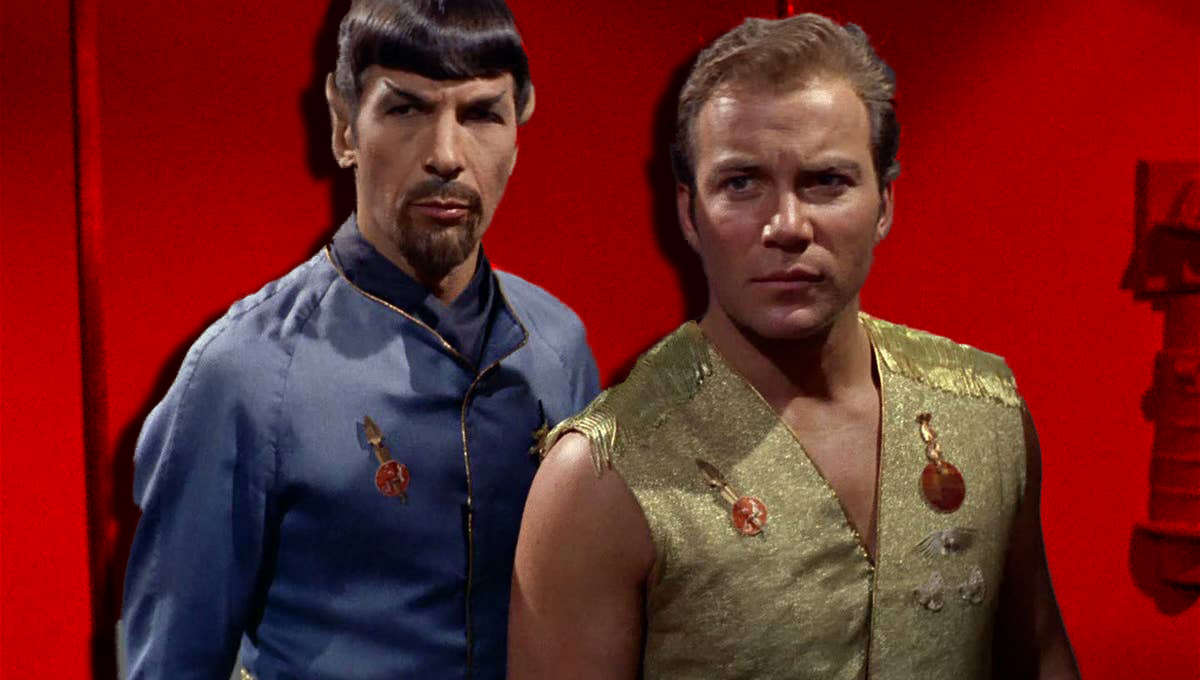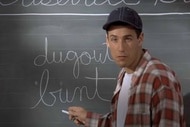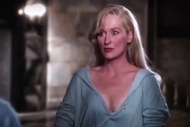Create a free profile to get unlimited access to exclusive videos, sweepstakes, and more!
If you live in the Star Trek 'Mirror Universe,' you're probably going to die

Through phaser blasts, radiation poisoning, sudden decompression, and even assassination attempts, the classic heroes of the Star Trek Universe tend to shuffle off this mortal coil with a noble sacrifice for the greater good. But these deaths don’t always stick. Star Trek III: The Search for Spock is an entire film devoted to "cheating death" and the ending of Star Trek: Picard played out in a similar fashion. But when writer Jerome Bixby penned the classic Star Trek Original Series episode “Mirror, Mirror” in 1967, he opened the door to the Mirror Universe (also known as the Terran Empire), establishing separate realities from what would become known as the Prime Universe, and setting the groundwork for subsequent writers to indulge dark fantasies of killing off well-established characters, from a certain point of view.
Overwhelmingly, the introduction of darker, sometimes twisted alternate versions of Star Trek’s main characters not only allowed the actors to play against their established on-screen type but allowed writers and directors to suddenly — and shockingly — kill a series regular.
While no one aside from some Mirror Universe Red Shirts was seen actually dying in “Mirror, Mirror,” the alternate Captain Christopher Pike had been assassinated off-screen by that universes’ James T. Kirk. It was subtle, but this murder was the beginning of a trend that we’ll call the Mirror-Death Syndrome: The idea that beings from this particular reality are not just destined to die, but to be killed, betrayed, or murdered horribly. This would become more evident as subsequent series unfolded.
During the Deep Space Nine era, Star Trek repeatedly visited the Mirror Universe, and these jaunts took the greatest toll on alternate versions of the regular cast. To summarize, over the course of four episodes during the series’ seven-year run, Mirror Universe Odo gets blasted, Quark, Rom, and Nog are executed, Ben Sisko and Jadzia reported dead, Vic Fontaine shot, and Garak poisoned. When the show ended, Mirror versions of Julian Bashir, Miles “Smiley” O’Brien, and Intendant Kira Nerys were the only regular characters who managed to survived.
Why is this? Perhaps these Mirror-killings reflect the darker nature of the shadow in all people, the side that actually wants to see what would happen if evil triumphed over good It could be argued these Mirror Universe counterparts are just metaphors for our heroes to defeat the darkness inside themselves. But that would require the Prime Universe versions to face off against their Mirror equivalents and, with very few exceptions, most of the dark personas almost never meet their doppelgängers.
So does the old saying “because we can” become the simplest answer to the question of why the Star Trek writers so often employ this trope, killing off alternate versions of beloved characters? Maybe it's an excuse to create a scene that has little repercussions to the established status quo? And it’s much easier (and kind of fun) to phaser goatee-sporting, evil disposition-having, parallel versions of cast members. The Mirror Universe itself is designed to be a dark reflection of the Prime Universe’s Federation. All of the elements that make Starfleet a force for good are taken to the extreme in a twisted authoritarian regime that prizes deception and betrayal, where only the strong succeed and survive. Even in the DS9 age, where the Terran Empire has fallen, the ideology is still "every being for themselves."
Star Trek: Discovery fully illustrates this character drive in its mid-season cliffhanger “Into the Forest I Go.” This return to the Mirror Universe began with the off-screen deaths of Michael Burnham and Ensign Tillie (Captain Killie), showing the Mirror-Death Syndrome is still prevalent on CBS All Access. But, for the first time, viewers got to see the dark structure of the Mirror Universe in the form of Emperor Georgiou. All the glimpses up until then had hinted at the sociological power struggles of this parallel world, but this episode really shows the Mirror society’s ruthlessness. It’s easy to see why the alternate Paul Stamets gets vaporized and Captain Lorca (finally) gets his comeuppance in the episode “What’s Past is Prologue.”
Of course, the Mirror Universe isn’t the only alternate reality we see in Star Trek — and Mirror Universe versions of main characters aren’t the only Starfleet members who die in the series. Some of the best episodes of Star Trek result in a character jumping to a slightly different universe, and there are many examples of a main character seemingly dying in the line of duty. However, in almost every instance, when a main character dies, it’s typically an accident and ultimately gets rectified in some way by the end of the show, as seen in the Voyager episode “Deadlock” in which Harry Kim dies when he’s sucked out in a hull breach, only to be replaced with an alternate universe version of himself. Miles O’Brien escaped death in the DS9 episode “Visionary,” and Worf technically killed numerous Geordie LaForges when he went reality-hopping in TNG’s “Parallels.”
All of these are definitely deaths of main characters, but they exist more to drive the plot of the particular story as opposed to being an outright “shocking” killing. Something about the Mirror Universe, though, seems to lead to its residents succumbing to brutal deaths that, as far as we know, are never undone. Is there something intrinsic to the Mirror Universe, unique among all of Star Trek’s alternate realities, that lends itself to such violence and such a high body count? Well, maybe.
Consider the difference between the Mirror Universe and what is technically Star Trek’s other most-famous alternate reality, the Kelvin Timeline from the J.J. Abrams' Star Trek films. These movies are set in an alternate timeline that begins when time-displaced Romulans destroy the USS Kelvin, killing George Kirk. This leads to what is, in many ways, a much darker (ignoring the lens flares) version of Star Trek. Spock’s mother and home planet are destroyed, and Star Trek Into Darkness reveals a much more militarized version of the Federation. And yet, there’s still heroism. This version of the Enterprise crew still all found one another and managed to boldly go where nobody had ever gone before. This was a timeline that started with a tragedy, but George Kirk’s noble last stand was perhaps the heroic seed from which the Kevlin Timeline grew.
Compare that to the origin of the Mirror Universe, as seen in the Star Trek: Enterprise episodes “In a Mirror Darkly Parts 1 and 2.” The Mirror Universe branched off from the Prime storyline when warp drive creator Zefram Cochrane shotgun blasted the welcoming Vulcan from Star Trek: First Contact. This gives rise to the Terran Empire, the killing of Admiral Vaughn (Captain Vaughn, in this world), the death of the goatee-sporting Vulcan Soval, and Commander Jonathan Archer succumbing to a very ignoble poisoning death. At no point in the episodes do we even see any of our recognizable characters from the Prime Universe, but the two-parter makes the argument that the Mirror-Death Syndrome is the result of that act of aggression against that first visiting Vulcan. With anger, malice, and the thirst for conquest being the impetus, could it be that the Mirror Universe and the violent fates of the main characters were actually tainted by that first act? It may not be a canon explanation, but it certainly fits, thematically.
It is always fun to see an evil version of the hero die. But in the Star Trek Universe, it does seem to depend on just what alternate reality you’ve come from — and what decision created your universe — that will determine whether or not you’ll survive an adventure. So, the Mirror-Death Syndrome seems pretty well tied to the Mirror Universe, and suffice to say, if you’re a member of any senior staff from that Mirror Universe, your life expectancy probably isn’t very long.














